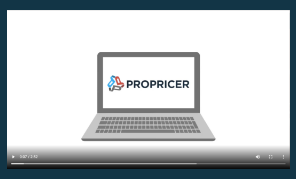What should you reasonably make on a contract? As a small business, you must calculate your profit on a government contract carefully. There are many factors. There are known limits. There is a strategy you must craft, a ceiling you must respect, and self-respect you must uphold.
That all said, here are the basic tenets of crafting a proposal that makes you money and shows the agency you’re working with that you’re an honorable player in the game.
Consult FAR 15, Chapter 11
It seems counterintuitive, but it’s actually in the government’s best interest for contractors to receive a fair profit margin. Profit is a motivator—it incentivizes optimal contract performance and ensures you have the resources you need to deliver effectively.
Contrary to popular belief, you’re not required to offer the government a significant discount. A better strategy is to treat the government as you would your favorite commercial customer. If you offer products to your preferred clients at a lower price or if you offer discounts based on quantity, prepayment, or another scenario, make sure to extend these same markdowns to the government.
When in doubt, refer to this section of the Federal Acquisition Regulation to crystal-ball your potential profit on a proposal.
This FAR section outlines the different factors that can affect your profit and how they may vary according to different scenarios. For example, estimated costs may not always align with your total actual costs. Fees can also fluctuate in such a way that you find your actual profit diverting from your original negotiation price.
Limitation on your profit
Pricing limits inevitably constrain your profit. Nevertheless, you’ll maintain solid ground as long as you play by the rules. One thing that helps is to take pricing limitations into account ahead of the negotiation. This will give you more room to determine a profit amount that’s both acceptable and fair.
The limits on profit apply primarily to cost-plus-fixed-fee contracts. In general:
- The fee for experimental, developmental, or research work contracts performed under a cost-plus-fixed-fee basis can’t exceed 15% of the contract’s estimated cost.
- Fees for architect-engineering contracts, especially those for public works or utilities, can’t exceed 6% of the estimated cost of construction for public work. This includes the production of designs, plans, drawings, and specs.
- The fee for all other cost-plus-fixed-fee contracts can’t exceed 10% of the contract’s estimated cost. (1)
There’s really no limit on your profit for fixed-price contracts. However, you still want to appear reasonable. Keep in mind that contracting officers will conduct market research to determine if your prices are competitive. That said, you can aim as high as 18% to 25% and successfully win bids. (2)
Factors included in profit
Breaking down the percentage of profit for each individual contract dimension can seem daunting. Especially since different government agencies assign distinct weights and requirements. It helps to follow these general guidelines:
|
Factor Weighted Range (Percent) |
|
Contractor Effort 1-4 |
|
Material Acquisition 4-12 |
|
Overhead 3-8 |
|
General Management 4-8 |
|
Other Costs 1-3 |
|
Other Factors |
|
Cost Risk 0-7 |
|
Investment Up to 2 |
|
Quality Control Up to 2 |
|
Federal Socioeconomic Programs Up to 5 |
|
Special Situations Up to 2 |
Breaking down the factors
As you develop your price point, make sure to consider how these elements will come into play and affect your profit—for better or for worse:
Contractor effort
Your ability to effectively perform depends on each contract’s unique context. Working with an agency office of 10 people will entail more routine and repetitive tasks than a contract with Pentagon offices. The latter will require more time, expertise, specialized support, compliance, and other needs. The stakes will also be higher, and you’ll be required to invest more into trained personnel to successfully manage each stage of the job.
As you evaluate each contract for pricing, make sure to consider the context of the agency and the products or services you’ll be required to provide. Try and estimate beforehand the amount of time and degree of expertise required to effectively deliver.
Other costs
Every contract features unique circumstances—many of which can generate additional costs. Be prepared ahead of time by factoring in these potential scenarios.
Agency reputation
If you’re working with an agency that has a reputation for being picky, even difficult, make sure to adjust your profit calculations for the extra costs your special attention will require.
Cost risk
Firm-fixed-price contracts are riskier than contracts involving cost reimbursement, which means you’ll want to modify your bid accordingly. Make sure to bump up the profit percentage to cover any additional risks on your part.
Investment
Some contracts require you to invest your own capital to produce and manufacture products. If this is the case, include a small percentage increase in your final price. However, if the agency agrees to send payments on a frequent, recurring basis, you’re better off refraining from any price hikes. This will help incentivize the government to stick to a set payment schedule and deliver your funds faster.
Quality control
How well does your business deliver? If you know you’re struggling with meeting deadlines, quality control, labor shortages, or any number of other constraints—downplay your profit percentages to offset these factors.
Federal socioeconomic programs
Minority-owned businesses or firms struggling with the aftermath of the Covid-19 pandemic and subsequent labor shortages may be able to add a small profit percentage. In some cases, you can even qualify for specified assistance programs.
Special situations
It’s possible that the work you perform on a contract will further develop your firm’s intellectual property or new product offerings, allowing you to monetize them in commercial markets down the line. If this is the case, consider taking a slight profit percentage dip in good faith. (1)
Easily build in profit with ProPricer
Pricing analysis isn’t for the faint-hearted. There are multiple factors and scenarios that come into play and you also have to consider real-time data. It helps to use the right tools that guarantee the most accurate estimates.
ProPricer Contractor Edition is the leading software for both contractors and government agencies when it comes to proposal pricing and negotiations. The platform automatically stores all estimates, formulas, and qualitative data related to your cost proposals. You’ll gain real-time visibility into all indirect and direct rates along with customizable cost breakdowns and roll-ups. ProPricer Contractor Edition also allows you to perform what-if analysis on unlimited scenarios including project delays, resource changes, and more.
Learn more about generating a smoother, more accurate pricing proposal process with ProPricer Contractor Edition.
Sources
- Government Contract Negotiations: A Practical Guide for Small Businesses
- Left Brain Professionals Article: Increase Profit Margins on Government Contracts




